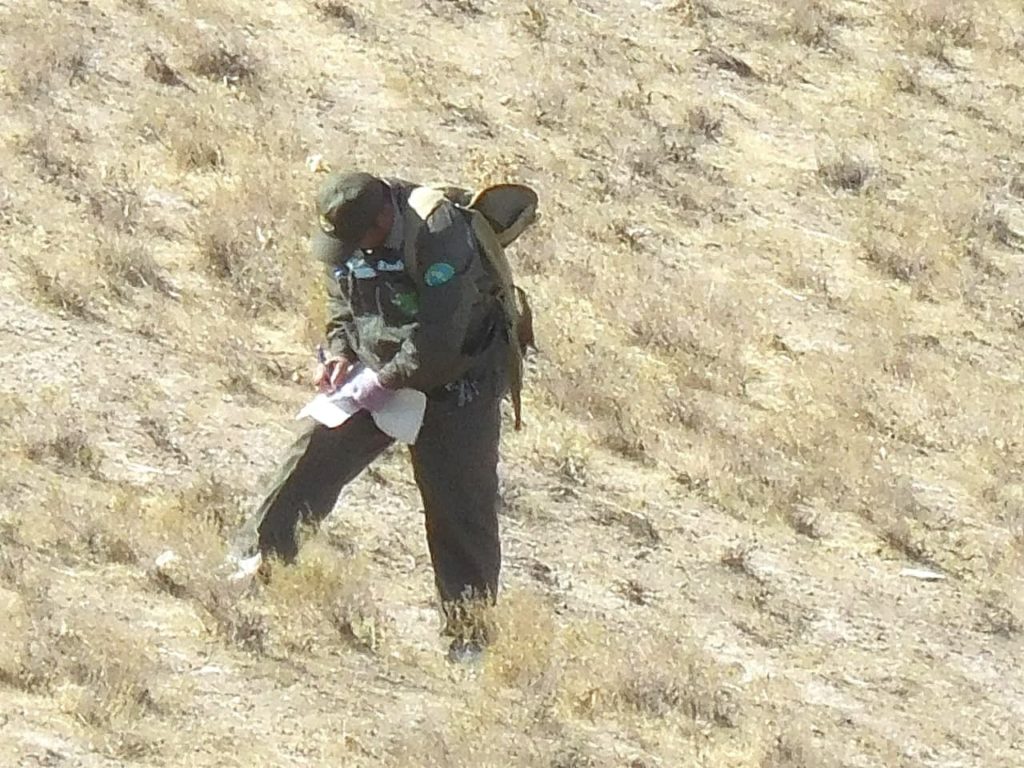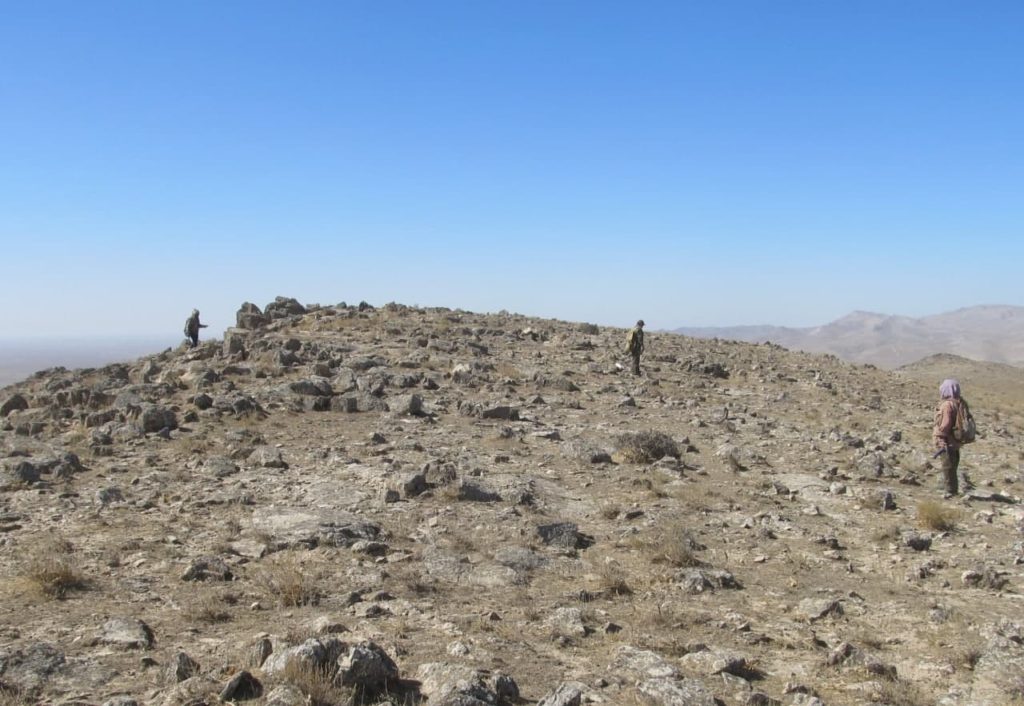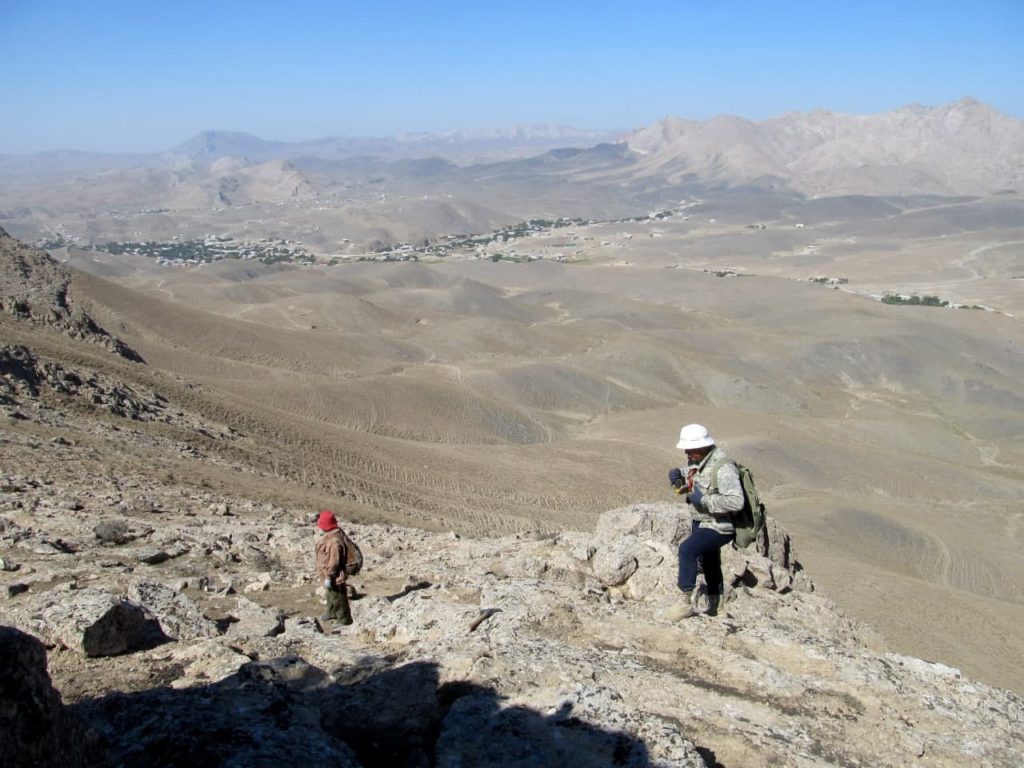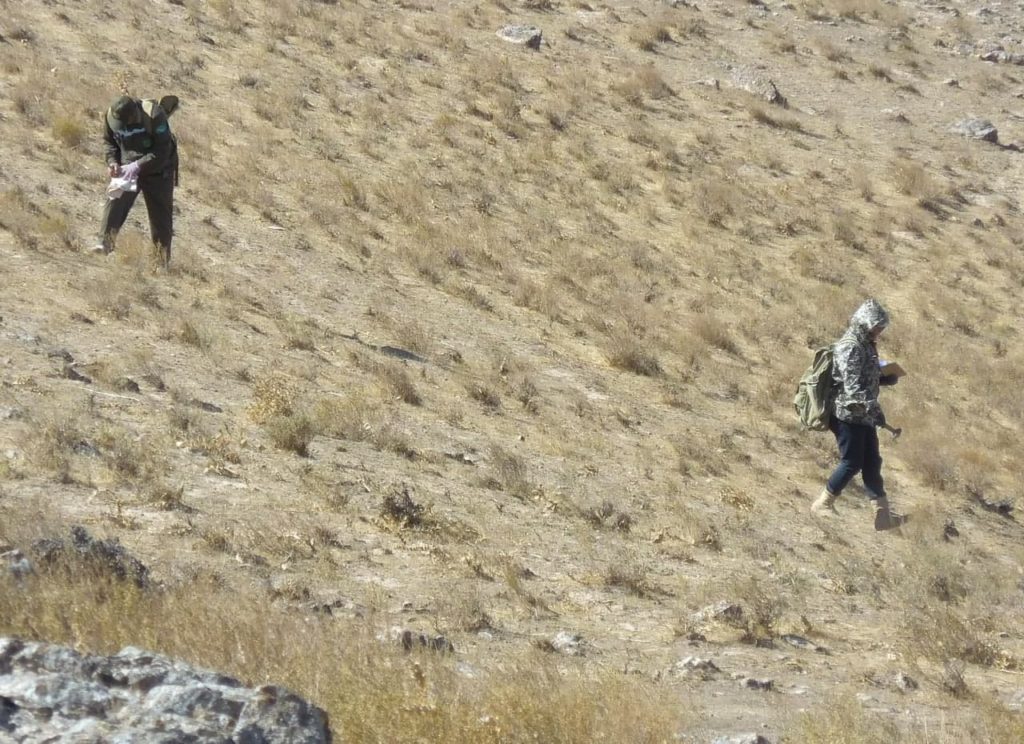In accordance with the Geological Assignment, State Unitary Enterprise “Regionalgeologiya” carries out field work on the project “Dismemberment and correlation of sediments of the Lower and Middle Paleozoic of the Zirabulak mountains and comparison with the updated International Stratigraphic Scale”, the purpose of which is to create an updated model of the dissection and correlation scheme of carbonate sediments of the Upper Ordovician, Silurian and Devonian of the Zirabulak mountains, as a scientific basis for geological survey, predictive metallogenic constructions for GDP-50 and prospecting works.
Specialists of the Stratigraphic Party are studying the deposits of the Devonian strata in the eastern part of the Zirabulak mountains. The object of biostratigraphic studies is the fossil remains of organisms and the strata of sedimentary rocks in which they are enclosed. The work includes several stages – collection, identification, detailed study and description of fossil remains.
Also, lateral changes in fossil complexes are studied to identify their dependence on facies changes, which is the subject of paleoecological (biofacial) studies, which determine the relationship between organisms and the environment. The features of the burial of the remains of organisms are of great importance in biostratigraphic studies.
The biostratigraphic method is used to subdivide the sections, that is, to identify the stratigraphic units in them, their correlation and age substantiation. Ultimately, stratigraphic schemes are developed, the basis of which is both stratigraphic units of complex content, in which paleontological substantiation is decisive or significant, and biostratigraphic units proper.
In large-scale geological mapping, the biostratigraphic method is mainly used to substantiate the geological (relative) age of local stratigraphic units and to correlate them with subdivisions of a regional or general stratigraphic scale. For the dissection of sediments, this method is us The Lower-Middle Paleozoic formations of the Zirabulak mountains are characterized by a varied lithological composition of rocks and a complex tectonic structure. ually used in combination with the lithological method.
Lithologic-stratigraphic sections are made in the outcrops of the Upper Ordovician, Silurian and Devonian deposits. Collection of organic remains, clarification of the lithological composition of rocks are carried out by points of paleontological observations.
Facial changes in strata along strike, their relationship with the surrounding rocks and the study of contacts with underlying and overlying sediments are carried out by points of detailed geological observations.



